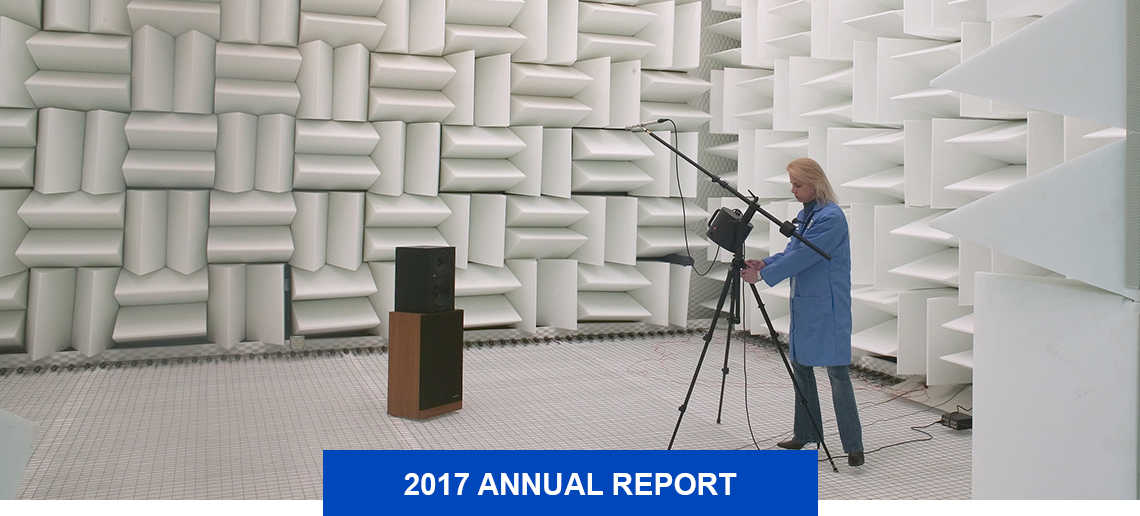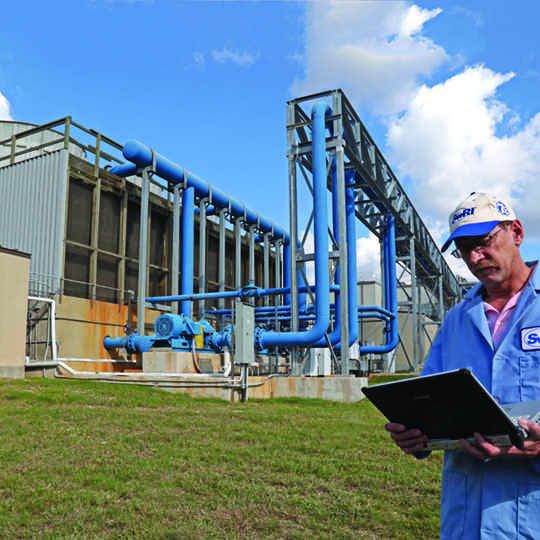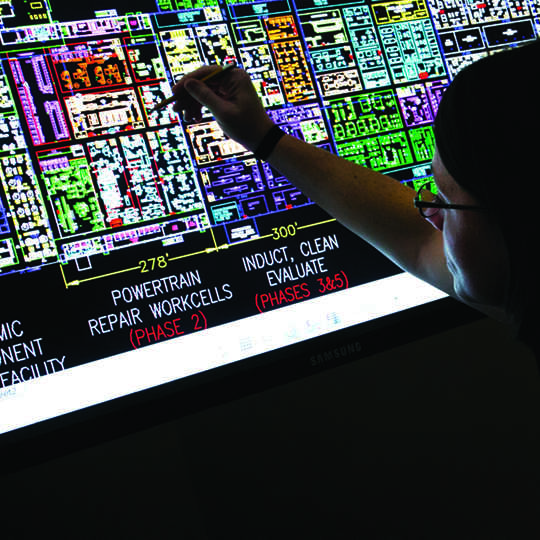
Southwest Research Institute pushes the boundaries of physics and engineering to create advanced technologies and systems that meet our clients’ challenging demands. Our diverse staff and world-class expertise result in innovative, cost-effective approaches that solve complex problems. Research and development ranges from novel defense technology to materials, electronics, acoustics and more.
In 2017, we received a 5-year, $39 million follow-on contract to support the Naval Surface Warfare Center – Dahlgren Division. This contract vehicle allows us to address emerging needs associated with homeland security, anti-terrorism, mission assurance, force protection, unmanned systems and related programs. For example, we are continuing to refine a device that projects an eye-safe laser beam to serve as a nonlethal deterrent system.
We continued upgrades to the Engine Tracking Database System, which helps friendly foreign militaries around the world support and maintain F-15 and F-16 engines. The ETDS program facilitates tracking and management of parts, maintenance, usage and inspection data for the F110 family of engines. Five allies currently use the system, with additional countries coming online next year.
In another program supporting our military allies, SwRI developed a filter test stand to evaluate both air and liquid filtration technology critical to protecting engines from contamination and damage. The stand’s differential pressure mode evaluates both liquid and air filters, capturing measurements across the filter element to accurately assess effectiveness and efficiency. For liquid filters, the bubble point pressure test determines the air pressure when bubbles first escape a wetted filter, identifying the largest pore size in the filter. Test stand software captures data and indicates whether a filter met specifications.
In a recent NASA program, we evaluated materials exposed to the acoustic pressure of a rocket launch to ensure they could withstand extreme sound pressure levels without breaking apart. We used our reverberant chamber to simulate the acoustic profile of a rocket launch across the entire audible spectrum, and we tuned the sound output to match custom launch profiles. We monitored and recorded sound levels before, during and after the launch simulation to ensure materials were rugged enough to withstand extreme noise.
SwRI has conducted failure and construction analyses of electronic and electrical components for nearly 40 years. We recently investigated explosions in electrical switchgear cabinets for a manufacturing plant. Failure analysis specialists worked with the client to determine that overloaded fuses degraded over time, resulting in catastrophic failure.

nSPCT™
As part of its condition based maintenance program, SwRI uses its n-Variable Statistical Process Control Tool (nSPCT) to identify anomalous water usage, assess system performance and prevent waste.

Army Helicopter Maintenance Facility
SwRI is helping the Army overhaul its helicopter maintenance facilities in Corpus Christi, Texas. Engineers are designing flexible manufacturing layouts for efficient work flows.
In an internal research program, SwRI engineers investigated large-scale, 3-D printing techniques for concrete construction projects. Layer-by-layer additive manufacturing methods used both a fixed gantry system and mobile robotics to deposit mortar-based material. We developed a patent-pending reinforcement system that may enhance physical connection and formed strength between successive layers of additively printed material. We tested this interlocking layer design and compared its shear strength to traditionally molded concrete samples using the same mortar-based composition.
For more information visit applied-physics.swri.org or contact Vice President Ken Bennett, +1 210 522 5242.
